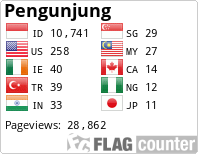AN EXPERIMENTAL STUDY IN ENGLISH LANGUAGE TEACHING: STUDENTS’ VOCABULARY BY AUTHENTIC MATERIAL
DOI:
https://doi.org/10.55606/sokoguru.v1i2.138Keywords:
Authentic Material, ELT, Students’ VocabularyAbstract
The goal of the study was to see if using authentic material helped students enhance their vocabulary. With a one-group pretest and posttest design, the researcher used the pre-experimental approach. The study's participants were students in their first year of MA Nurul As'adiyah Callaccu's academic year 2019/2020. The study included a total of 35 students as a sample. Cluster random sampling was used to collect the data. The information was gathered through vocabulary exams (pretest and posttest). The researcher utilized t-test analysis to see if using authentic material helped students improve their vocabulary. The data analysis revealed that the difference between the pretest and posttest was considerable. The value of sig (2-tailed) was smaller than the value of (a) = 0.05 (0.00<0.05), as shown by the statistical calculation. Based on the outcomes of the study, the researcher concludes that using authentic material in the first year of MA Nurul As'adiyah Callacu can help students improve their vocabulary.
References
Aladini, F., & Farahbod, F. (2020). Using a unique and long forgotten authentic material in the EFL/ESL classroom: Poetry. Theory and Practice in Language Studies, 10(1), 83-90.
Albiladi, W. S. (2019). Exploring the Use of Written Authentic Materials in ESL Reading Classes: Benefits and Challenges. English language teaching, 12(1), 67-77.
Arianie, M. (2017). Authentic material and interactive activities in EFL classroom. ENGLISH FRANCA: Academic Journal of English Language and Education, 1(2), 115-134.
Assiddiq, M. A. (2019). Authentic Materials in Reading Comprehension Classroom: Its Effectiveness to Indonesian EFL Students’ Achievement. International Journal for Educational and Vocational Studies, 1(7), 707-712.
Braithwaite, D. O., Schrodt, P., & Phillips, K. E. (2021). Introduction: Meta-theory and theory in interpersonal communication research. In Engaging theories in interpersonal communication (pp. 1-23). Routledge.
Carter, R., & McCarthy, M. (2014). Vocabulary and language teaching. Routledge.
Coxhead, A., & Demecheleer, M. (2018). Investigating the technical vocabulary of plumbing. English for Specific Purposes, 51, 84-97.
Creswell, J. W. (2014). Qualitative, quantitative and mixed methods approaches.
Deuze, M. (2011). Media life. Media, culture & society, 33(1), 137-148.
Dewi, R. C. (2018). Utilizing Authentic Materials on Students’ Listening Comprehension: Does it have Any Influence?. Advances in Language and Literary Studies, 9(1), 70-74.
Fandiño, F. G. E., Muñoz, L. D., & Velandia, A. J. S. (2019). Motivation and E-Learning English as a foreign language: A qualitative study. Heliyon, 5(9), e02394.
Gilmore, A. (2007). Authentic materials and authenticity in foreign language learning. Language teaching, 40(2), 97-118.
Graves, M. F. (2016). The vocabulary book: Learning and instruction. Teachers College Press.
Hafifah, G. N., & Mayasari, L. (2020). The use of authentic material in teaching reading descriptive text: Review of literature. Academic Journal PERSPECTIVE, 8(2), 122-134.
Hao, Y., Lee, K. S., Chen, S. T., & Sim, S. C. (2019). An evaluative study of a mobile application for middle school students struggling with English vocabulary learning. Computers in Human Behavior, 95, 208-216.
Jackson, H., & Amvela, E. Z. (2007). Words, meaning and vocabulary: An introduction to modern English lexicology. Bloomsbury Publishing.
Khan, R. M. I., Radzuan, N. R. M., Shahbaz, M., Ibrahim, A. H., & Mustafa, G. (2018). The role of vocabulary knowledge in speaking development of Saudi EFL learners. Arab World English Journal (AWEJ) Volume, 9.
Marpaung, M. S., & Situmeang, H. J. P. (2020). Enhancing Students' Vocabulary through Authentic Materials and Multimedia. Acuity: Journal of English Language Pedagogy, Literature and Culture, 5(2), 85-101.
McLeod, S. (2018). Communication rights: Fundamental human rights for all. International Journal of Speech-Language Pathology, 20(1), 3-11.
Nagy, W., & Townsend, D. (2012). Words as tools: Learning academic vocabulary as language acquisition. Reading research quarterly, 47(1), 91-108.
Nation, P., & Meara, P. (2013). 3 Vocabulary. In An introduction to applied linguistics (pp. 44-62). Routledge.
Rao, P. S. (2019). The effective use of authentic materials in the English language classrooms. Shanlax International Journal of Arts, Science and Humanities, 7(1), 1-8.
Rao, P. S. (2019). The role of English as a global language. Research Journal of English, 4(1), 65-79.
Rupley, W. H., & Nichols, W. D. (2005). Vocabulary instruction for the struggling reader. Reading & Writing Quarterly, 21(3), 239-260.
Rusmawaty, D., Atmowardoyo, H., Hamra, A., & Noni, N. (2018). Teachers' Beliefs of Authentic Materials for Teaching Reading in Indonesian EFL Classrooms. Journal of Language Teaching and Research, 9(3), 608-613.
Safitri, L. (2017). The Use of Authentic Materials In EFL/ESL Classroom. JEE (Journal of English Education), 3(1), 23-26.
Saidbakhramovna, A. F., Valijonvna, R. N., & Sharofidinovna, K. D. (2021). The method of educating vocabulary in a foreign language or target language. Linguistics and Culture Review, 5(S1), 1649-1658.
Scannell, P. (2013). History, media, and communication. In A handbook of media and communication research (pp. 233-248). Routledge.
Siregar, S. R., & Zainuddin, Z. (2021). Authentic Material Media to Enhance Students’ Reading Descriptive Text. English Education: English Journal for Teaching and Learning, 9(01), 100-110.
Sundana, G. P. (2017). The use of authentic material in teaching writing descriptive text. English Review: Journal of English Education, 6(1), 81-88.
Webb, S. A., & Chang, A. C. S. (2012). Second language vocabulary growth. RELC journal, 43(1), 113-126.
Wu, T. T. (2018). Improving the effectiveness of English vocabulary review by integrating ARCS with mobile game‐based learning. Journal of Computer Assisted Learning, 34(3), 315-323.















